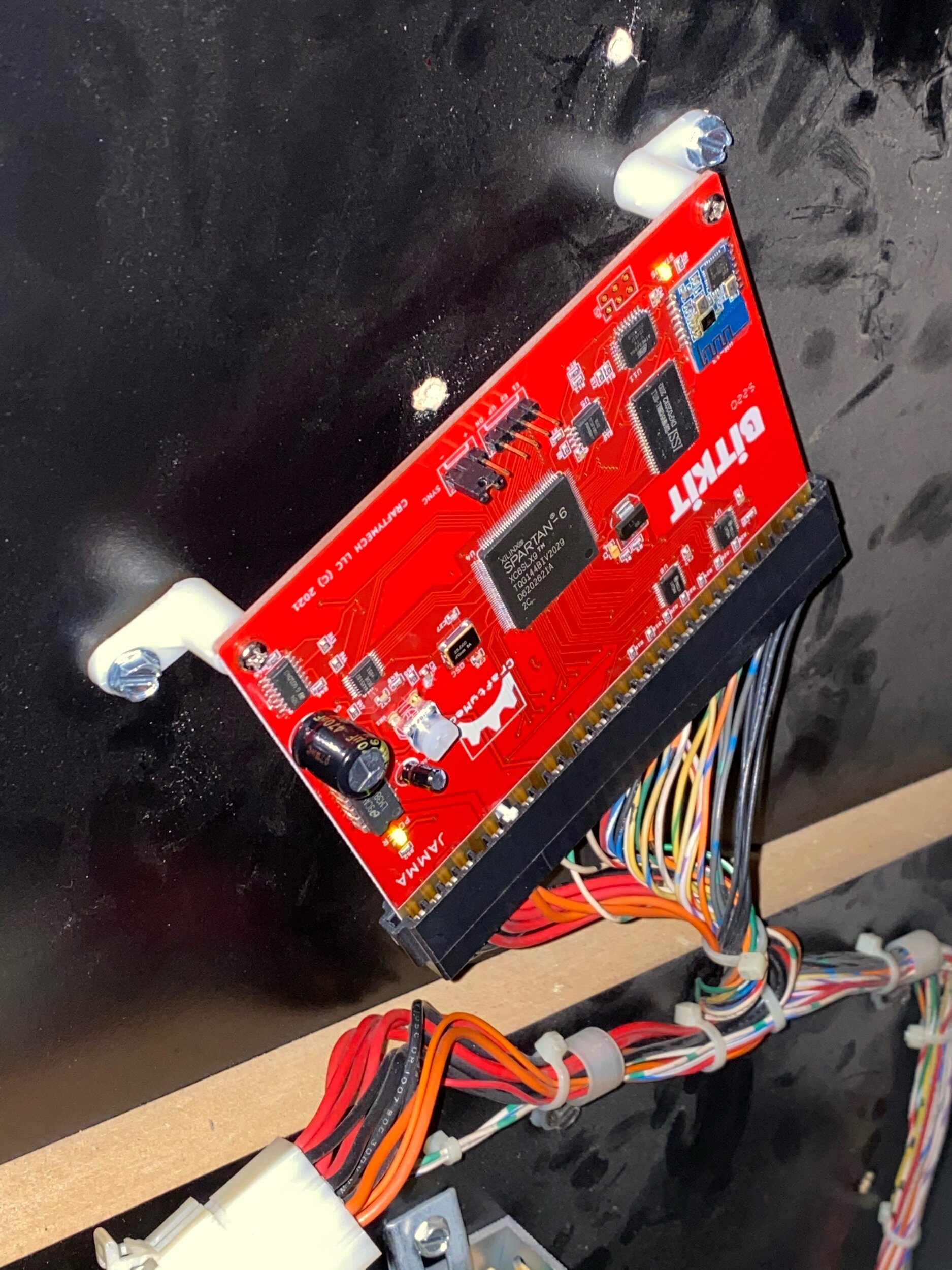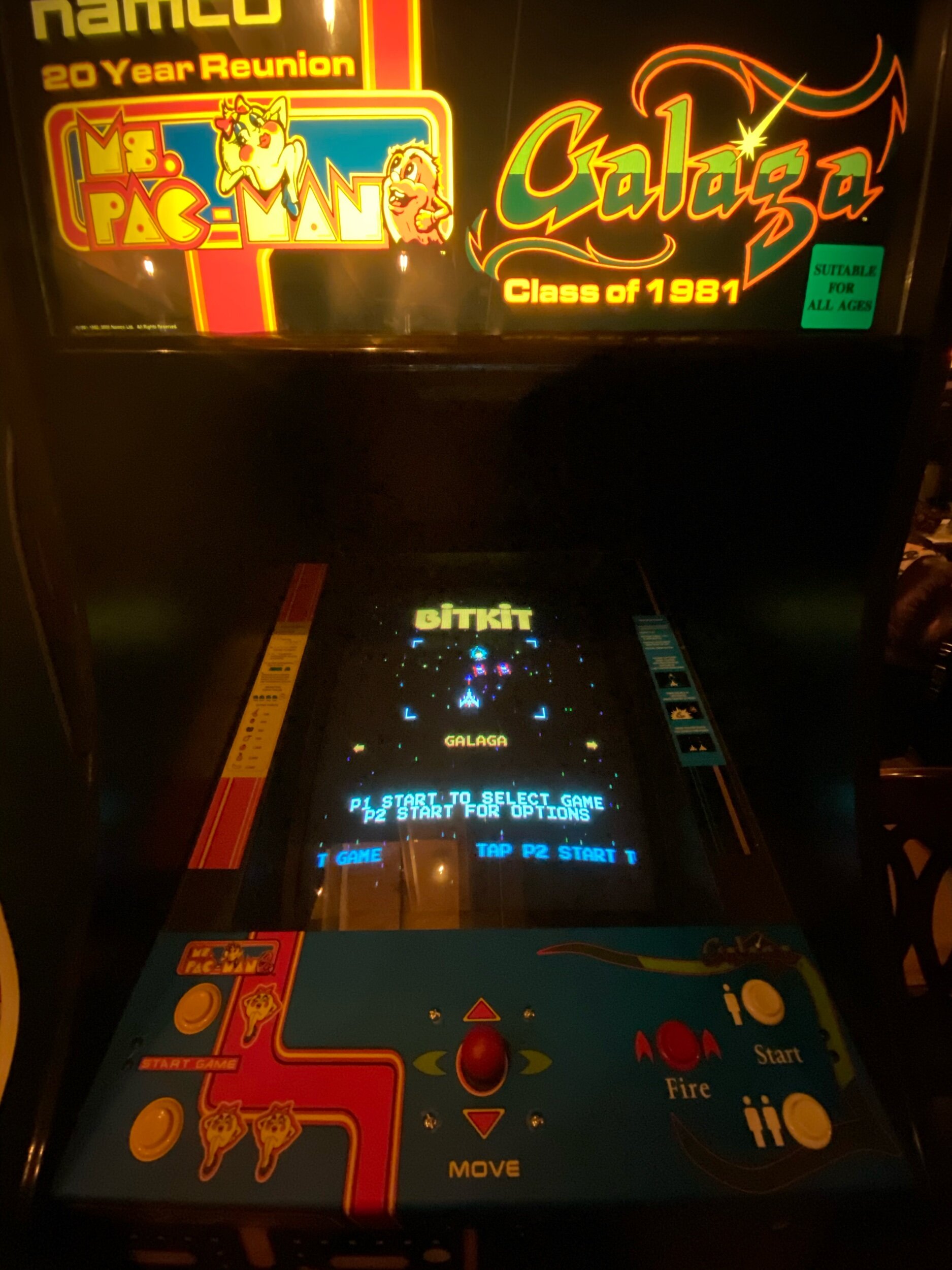Left the dust because - it is real dust. Collector dust. This way, you know it is real! :)
When I was growing up, my mom had this sister, that wasn’t actually a blood relative. Through the transitive property of whatever, that made her sister’s three boys my cousins. They were a bit older but were cool to me and I always liked to visit them.
I’d loose innocence by the centimeter every time we’d hang out.
In my memory at least, every one of them was a different avatar of a Jack Black character. They were raised by MTV and Basic Cable, Rock Posters on the walls of their cluttered rooms and the kind of energy you get with three teenaged boys resonating off of one another. I’d spend every car ride home mentally digesting another discovery in heavy metal or some sex-joke I didn’t quite understand yet but knew must be hilarious.
That tangent to express my notion that Bitkit was a secret all the cool kids knew about and I’m just now really discovering. I sort of feel like Bitkit is to my arcade-discovery as Queensrÿche was to my cousin-imposed music discoveries. I knew of the Bitkit, even had one tucked away for later-use for over a year..
But having the Bitkit tucked away is like hearing a single on the radio and playing it is like listening to the full album.
When I first was introduced to Bitkit and started to find out its capabilities as they pertain to specific games, large parts of it go unspoken, I suspect in a deliberate attempt to stay under the radar or not court the wrong type of licensing attention. In this post, I want to shine a little flashlight on the Bitkit. Not a bat-signal to wake the neighbors but maybe a bit of clarity for those of you who know where to look. I don’t want to blow up anyone’s spot here but I do want you to see the potential in this awesome little card and hopefully feel compelled to support the developer of it.
CraftyMech
CraftyMech is among a short credit-roll of stand out names in this hobby for creating awesome tools and being a positive influence. Back when I was struggling to find an MCR Compatible monitor to finish out my Tapper, a friend suggested this neat little tool that I just absolutely had to have. The tool, was the CraftyMech TPG.. I knew the name CraftyMech from numerous helpful KLOV posts and some Broken Token Podcasts.
The TPG is an essential tool for monitor troubleshooting and dial in. Really glad I bought it!
Anyway.. back to Bitkit. Bitkit is a JAMMA-based FPGA of various popular early arcade hardware. If it had a Z80 (even.. 3 of them..), the Bitkit is probably technically capable of playing it. It is sort of similar to the popular JROK-designed wSYSFPGA Multi Williams PCB or the Clay Cowgill designed ArcadeSD PCB (although ArcadeSD is actually really-good emulation, not FPGA).
In a sentence: It is a modern board that can mimic (note, I didn’t use the work emulate) classic arcades with near perfection.
FPGA
To understand what separates boards like Bitkit from the old 60-in-1 Chinese pirate rom PCBs, you need to at least understand what FPGA is. Field Programmable Gate Array’s are user-customizable chips that can be programmed to mimic other hardware.
Imagine the original Atari Centipede boardset where you have a main game board and an audio board / amplifier. The Atari Centipede PCB had something like 32 distinct IC’s, half a dozen ROMS, 3 distinct classes of RAM in 11 different configurations, a micro processor, host of capacitors, transistors and resistors.
Well, if you have sufficient IO & behavior specs for all of that hardware you could arrange it all into a workflow in something like MatLAB and essentially design the entire Centipede PCB as a bin-file that can be flashed into a single chip or chipset. That chip/chipset is the FPGA. Any code the game might have used is missing but you would have recreated the entire hardware platform with the benefit of modern chip design and a placeholder to insert the game code in a ROM slot.
That’s about where my knowledge stops. I do know a dozen or so programming languages from three decades but if you brought me a chip or a populated circuit and said “fPGA this thing” - I wouldn’t know where the F to begin. I’m just going to assume as always that step 1)Drink Bourbon. From there, I’m out of my experience.
In the same way I once blew the mind of a C-Suite exec by explaining on a plane ride to China that I had a near-enough copy of their AS/400 dataset on my cheap laptop, if you really stop and think about it:
We can put 8 billion transistors in your $700 iPhone. We can put 92 billion transistors in a $9,000 industrial fPGA. Of Course we can put a couple million transistors in a $18 FPGA chip like the Spartan-6.
Bitkit, Specifically
On the surface, Bitkit targets some lesser-known titles from the 80’s; games you aren’t likely to see the Stranger Things kids playing or see referenced in 80’s pop culture digests. CraftyMech’s original release of the Bitkit card targeted the SNK 6502 arcade hardware that was used for games like Nibbler, Vanguard, Pioneer Balloon, Satan of Saturn, Zarzon & Fantasy.
Since that initial release, the developer has added support for Pac-man arcade hardware to bring in games like Lizard Wizard, Abscam, Eyes, Pac. I’d personally like to see Van-Van-Car added. I love that game for some stupid reason.
Within a year, the developer added (a targeted subset of) Namco-Galaxian arcade hardware to get games like Scramble, Jump Bug, Amidar, Anteater.
By the end of 2020, he added support for Galaga-alike hardware, which opens up future potential for 3xZ80 games.
Bitkit, Reunion. Reunion, Bitkit
The 20yr Namco Reunion cabinet is an odd duck. Galaga’s sounds were just a little off in ways I’m not experienced enough to describe and the decision to hide Pac-man on the game board only to be accessible by a sequence (Up, Up, Up, Down, Down, Down, Left, Right, Left, Right, Left) is bizarre to me. Whiskey. Tango. Foxtrot.
The Reunion PCB isn’t known for extreme durability and reliability, either. The giant vertical-orientation monitor makes it novel, as well.
It may be the perfect cabinet for Bitkit.
The Bitkit came in a USB model originally and now comes in a Bluetooth model. You initially set up the card (upload game roms, download and upload High Scores) from a well made Windows or MacOS app, Bitkit Manager. I have one of each type of card and my general impression is that while Bluetooth sets up easily and works well it does have range limitations, at least for my use-case. I’d hoped to be able to connect from a tower PC in my Gameroom that is 9 ft, 6 in from this cabinet without obstruction. It did connect but the transfer times were painfully slow. It would take over an hour plus multiple re-attempts per ROM file upload.
For comparison, I can use an xBox One Controller on the PC from the same distance and bluetooth transfer between IOS and Android devices in that same distance. All that said, I don’t necessarily fault the Bitkit for Bluetooth range, it is possible that by placing the Bitkit farther from the monitor chassis frame I could have improved the distance but I didn’t feel like redoing all of the cable management in the cabinet, at least not right now. Long term, I’m either going to need to drag a USB extension cable with another bluetooth radio nearby the cabinet or switch it over to my USB spare. All doable and unique to my gameroom layout.
All that said, Bluetooth is cool if you are within a few feet of the cabinet. Once I resigned to carry a laptop over to the cabinet, the setup went smoothly. There is rumor of an IOS or Android version of the Bitkit Manager App - that would solve my distance snafu with style, here’s hoping it happens I have spare iPads and Android tablets coming out of my ears from past dev projects.
The on-screen setup menu system is well appointed but not cluttered, self explanatory features for enabling the ability to boot straight to a game, rearrange or hide game slots and assign buttons. The BitKit is sold as a home-use JAMMA card, so there aren’t pricing options to adjust through menus but since it is full-hardware FPGA on a JAMMAS harness, the coin up buttons do still trigger a credit advance in games I’ve tried. That’s handy if your game room has tokens or a bucket of quarters for guests to play out of.
The game selection menu system is a carousel style left or right selection of the game title art. It has an appealing star field and simple font selection that feel right for this era of games.
The Bitkit can be put in single game mode and set to boot to a particular game, making it a handy solve, alternative or replacement for older hardware, in a pinch. MsPac board on the fritz? Get a Bitkit. Galaga acting up? Get a Bitkit. I have a friend right now with a stack of problematic Bosconian PCB’s patiently waiting for support to come to Bitkit.
In my cabinet, I have the Bitkit booting to menu and with the full romset and exploring some of these lesser known games will be a large part of my Q1. In Summary: I freaking love this PCB.
Got a Bitkit and looking for roms? Let me save you some time. Go here -> Bitkit/Roms







